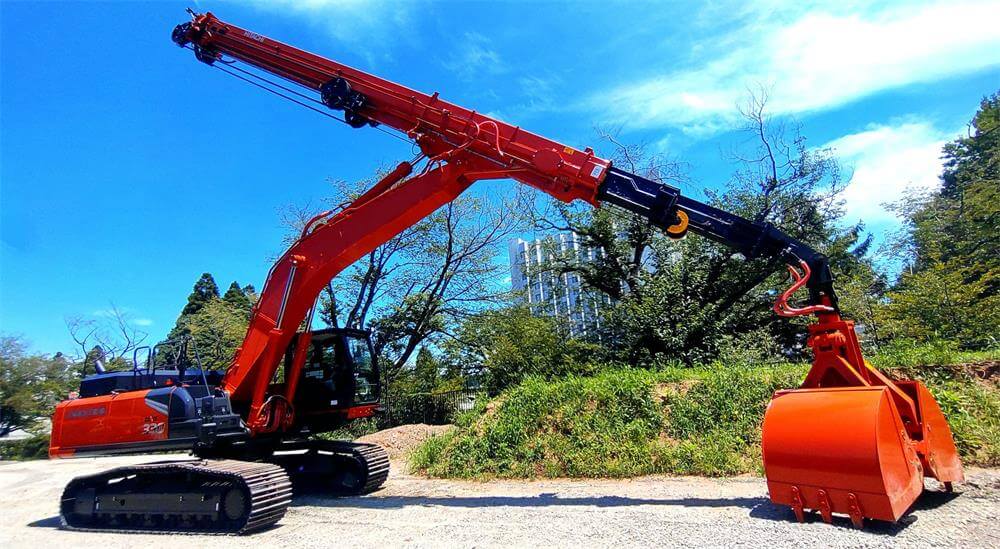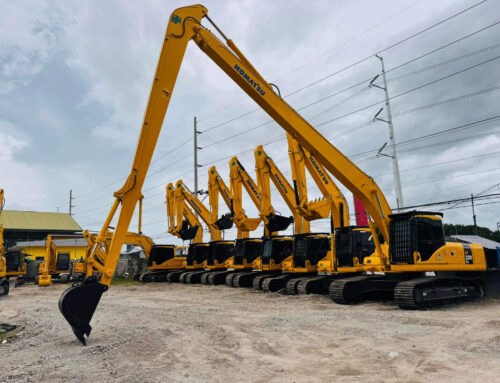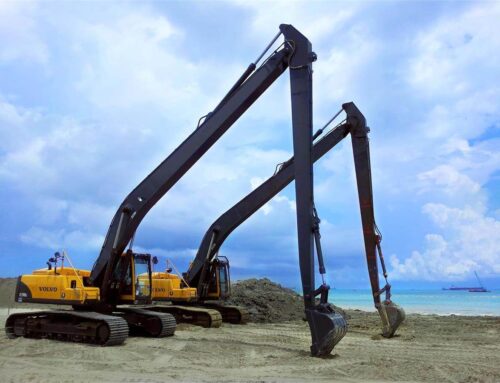In the world of construction and heavy machinery, excavators play a crucial role in numerous tasks, from digging and trenching to lifting and demolition. One of the most critical components of an excavator is its arm, which comes in various types, each designed for specific applications. Among these, excavator telescopic boom have gained significant popularity due to their unique advantages. This blog post will explore the advantages of excavator telescopic boom compared to other excavator arms, as well as compare the advantages and disadvantages of different types of excavator arms.
Excavator Telescopic Boom: An Overview
excavator telescopic boom, also known as telescopic booms, are designed to extend and retract, much like the sections of a telescope. This design allows the arm to reach further distances without sacrificing stability and control. excavator telescopic boom are particularly useful in applications where space is limited or where a long reach is required without repositioning the excavator.
Advantages of Excavator Telescopic Boom
-
Extended Reach and Flexibility
Excavator telescopic boom offer an extended reach compared to standard excavator arms. This feature is particularly beneficial in applications such as deep excavation, demolition, and high-reach operations. The ability to extend and retract the arm allows operators to access hard-to-reach areas and work at varying depths without moving the base of the excavator.
-
Space Efficiency
In urban construction sites or confined spaces, maneuverability is often a challenge. excavator telescopic boom can extend to perform tasks and then retract to a compact size, making them ideal for working in tight spaces. This space efficiency reduces the need for multiple repositioning of the machine, thereby increasing productivity and reducing operation time.
-
Versatility
The versatility of excavator telescopic boom makes them suitable for a wide range of applications. From digging deep foundations to reaching high demolition sites, these arms can handle diverse tasks with ease. This adaptability is a significant advantage over fixed-length arms, which may require different machines for different tasks.
-
Improved Safety
Safety is paramount in construction operations. excavator telescopic boom enhance safety by allowing operators to maintain a safe distance from the work area, especially in hazardous conditions like demolition. The ability to extend the arm without moving the base also minimizes the risk of the machine tipping over, thus enhancing operational safety.
-
Cost-Effectiveness
Although excavator telescopic boom might have a higher initial cost compared to standard arms, their ability to perform multiple tasks without the need for additional machinery can lead to cost savings in the long run. The reduced need for repositioning and the increased efficiency translate into lower operational costs and higher productivity.
Comparison with Other Excavator Arms
-
Standard/Fixed-Length Arms
Advantages:
Simplicity and Durability: Fixed-length arms are simpler in design and generally more durable, with fewer moving parts that can wear out.
Lower Initial Cost: These arms are often less expensive to purchase and maintain, making them a cost-effective choice for straightforward digging tasks.
Disadvantages:
Limited Reach: Fixed-length arms lack the flexibility and reach of excavator telescopic boom, making them less suitable for tasks that require accessing varying depths or heights.
Less Versatile: These arms are typically designed for specific tasks, limiting their versatility in different construction scenarios.
-
Articulating Arms
Advantages:
Enhanced Maneuverability: Articulating arms, with their multiple joints, offer superior maneuverability and can work around obstacles with ease.
Precision: The ability to adjust multiple joints allows for precise positioning and control, which is beneficial for delicate tasks.
Disadvantages:
Complexity: The complex design of articulating arms can lead to higher maintenance requirements and potential mechanical issues.
Higher Cost: The advanced engineering and materials used in articulating arms make them more expensive than standard arms.
-
Boom and Stick Configuration
Advantages:
Balanced Performance: This configuration provides a good balance between reach and digging force, suitable for general construction tasks.
Versatility: The boom and stick setup is versatile and can be used for a variety of applications, from digging trenches to loading materials.
Disadvantages:
Moderate Reach: While versatile, this configuration does not offer the same reach as excavator telescopic boom, limiting its effectiveness in deep excavation or high-reach tasks.
Operational Complexity: Operating both the boom and stick can be more complex compared to fixed-length arms, requiring skilled operators for efficient use.
Conclusion
When selecting an excavator arm, understanding the specific requirements of the task at hand is crucial. excavator telescopic boom stand out for their extended reach, flexibility, and versatility, making them ideal for a wide range of applications, from urban construction to deep excavation and demolition. While they may come with a higher initial cost, the long-term benefits in terms of productivity, safety, and operational efficiency often justify the investment.
On the other hand, standard fixed-length arms, articulating arms, and boom and stick configurations each have their unique advantages and are suitable for specific scenarios. Fixed-length arms offer simplicity and cost-effectiveness, articulating arms provide maneuverability and precision, and boom and stick configurations deliver a balanced performance for general tasks.
Ultimately, the choice of excavator arm depends on the specific needs of the project, the working environment, and the budget. By understanding the strengths and limitations of each type of arm, construction professionals can make informed decisions to enhance their operations and achieve optimal results.







Leave A Comment